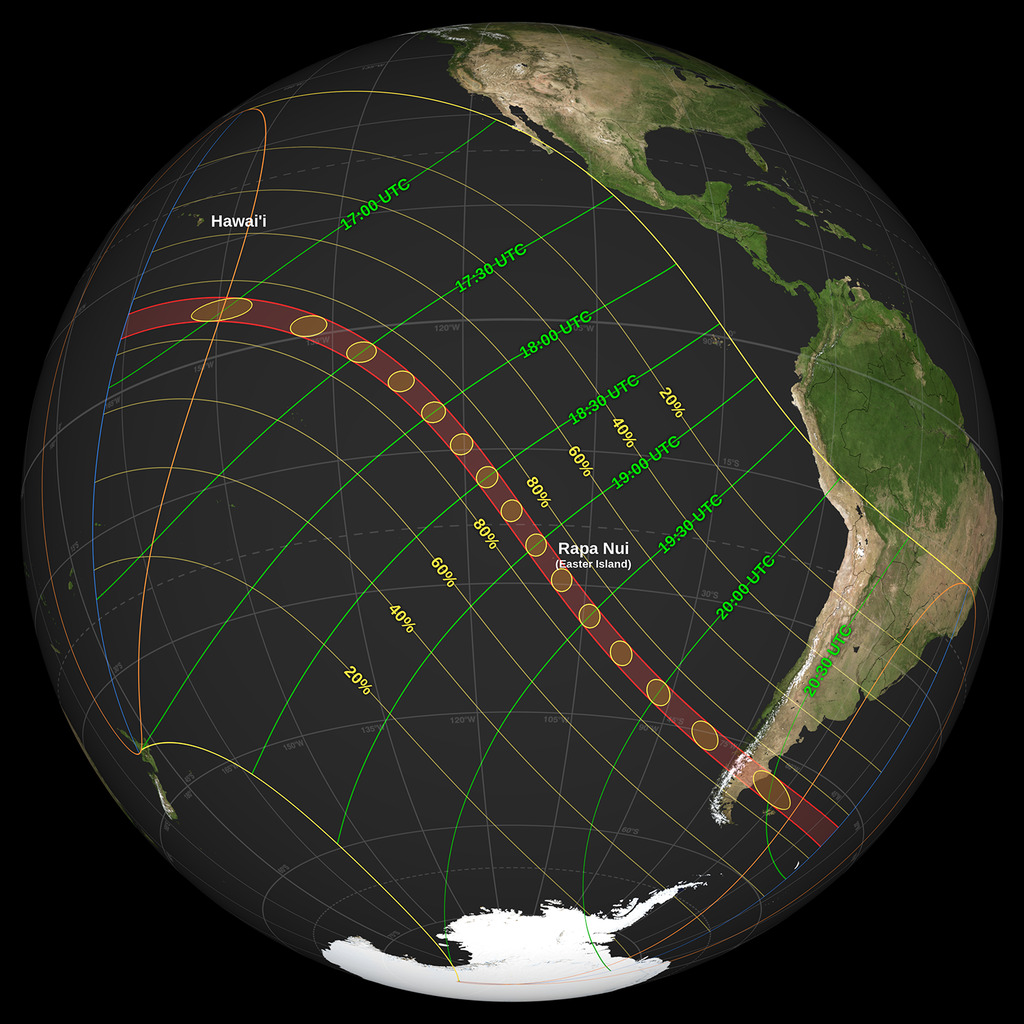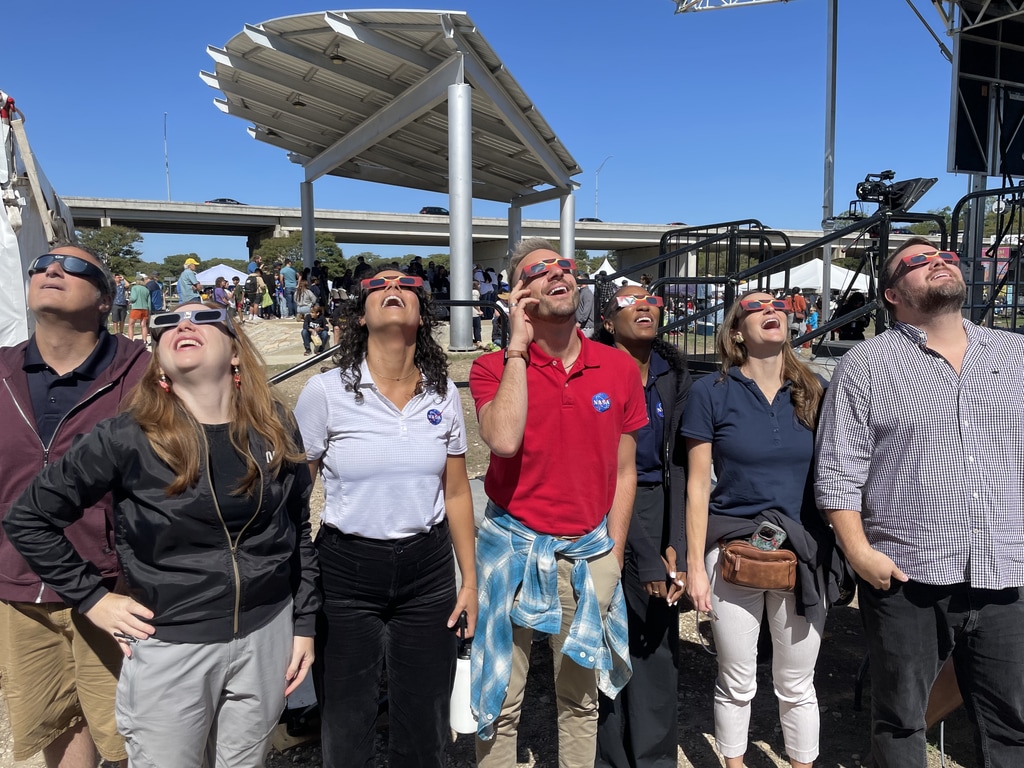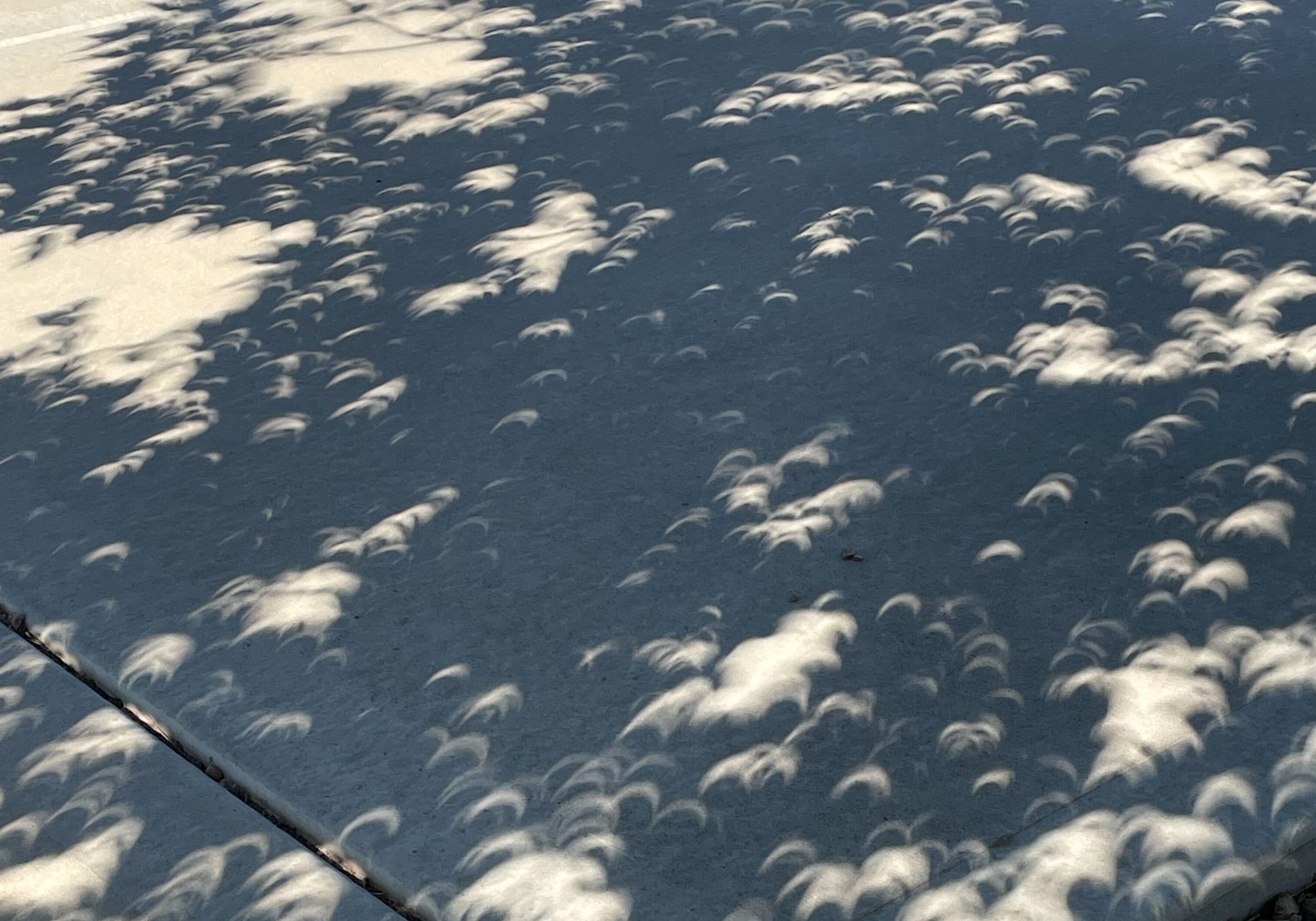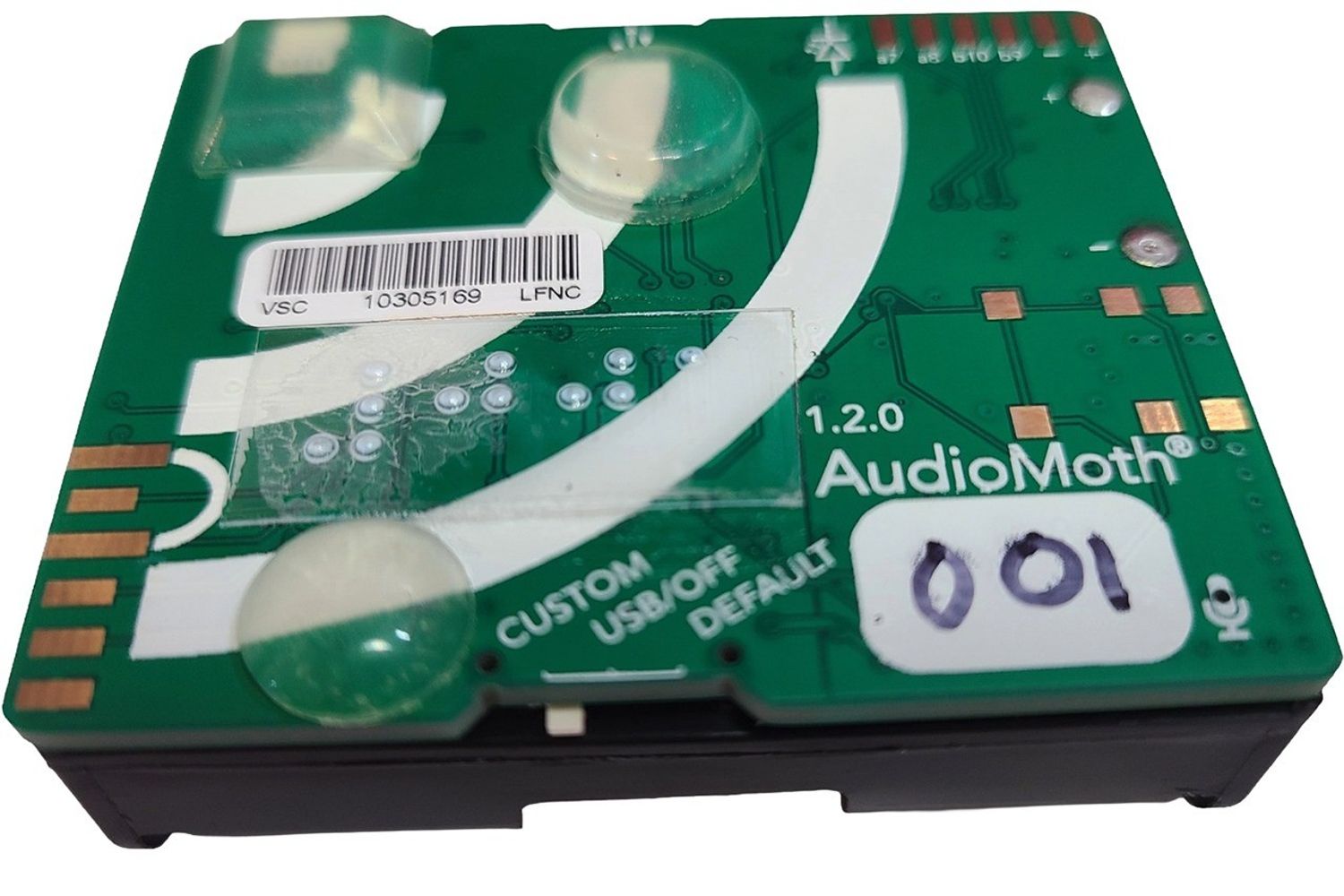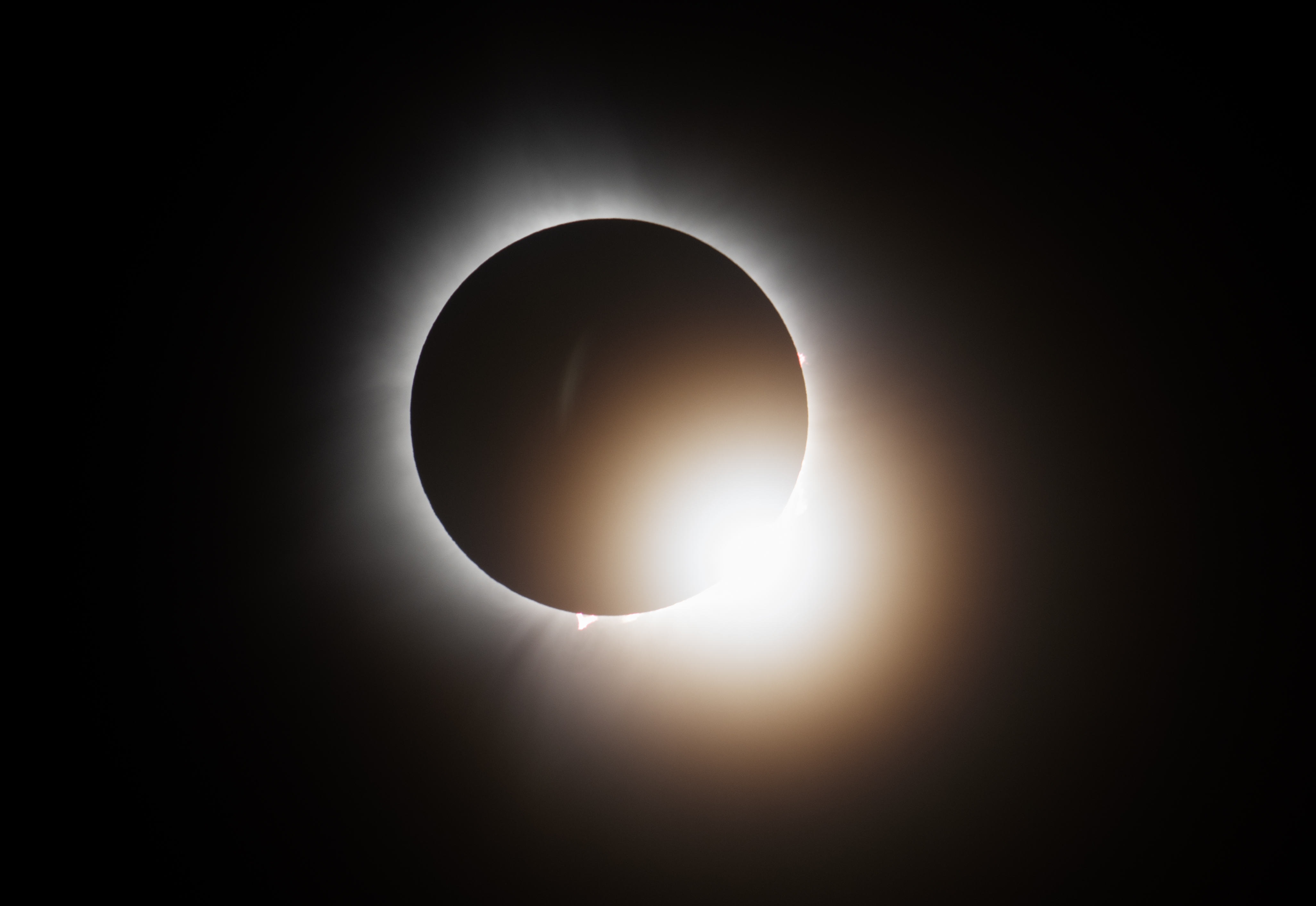October 2, 2024
Annular Solar Eclipse
On Oct. 2, 2024, the Moon will pass in front of the Sun, casting its shadow across parts of Earth. An annular solar eclipse will be visible in parts of South America, and a partial solar eclipse will be visible in parts of South America, Antarctica, North America, the Atlantic Ocean, and the Pacific Ocean, including Hawaii.
Eclipse Path Map
Where to Watch
The annular solar eclipse will be visible in parts of:
- Argentina
- Chile
The partial solar eclipse will be visible in all or parts of*:
- American Samoa
- Antarctica
- Argentina
- Baker Island, U.S. Minor Outlying Islands
- Brazil
- Chile
- Christmas Island
- Clipperton Island
- Cook Islands
- Falkland Islands
- Fiji
- French Polynesia
- Hawaii, USA
- Mexico
- New Zealand
- Niue
- Palmyra Atoll, U.S. Minor Outlying Islands
- Paraguay
- Pitcairn Islands
- Samoa
- South Georgia and South Sandwich Islands
- Tokelau
- Tonga
- Tuvalu
- Uruguay
- Wallis and Futuna
* This list may not be exhaustive.
What to Expect
-
Annular Eclipse
This annular solar eclipse is happening when the Moon passes between the Sun and Earth while it is at its farthest point from Earth. Because the Moon is farther away from Earth than usual, it appears smaller than the Sun and does not completely cover the Sun. This creates what looks like a "ring of fire" in sky.
Before and after the Sun appears as a ring of fire, viewers will see parts of the Sun blocked, creating a crescent shape.
Because the Sun is never completely covered, observers must wear proper eye protection at all times during this eclipse.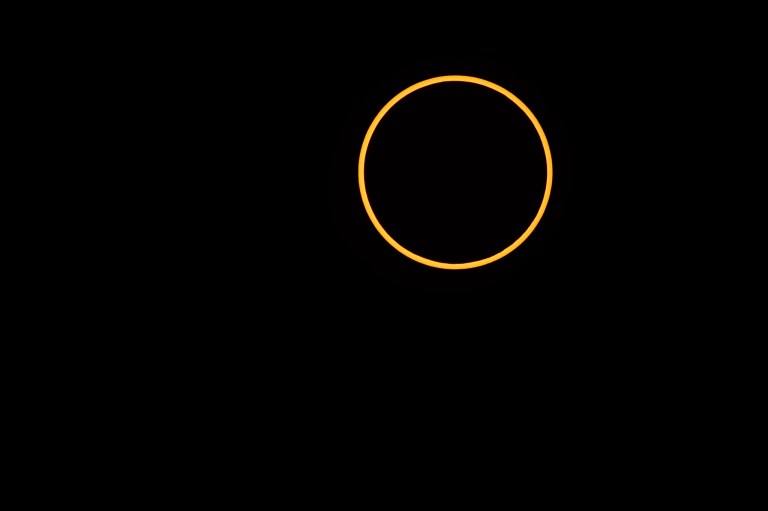 The Annular Solar Eclipse of 2023 taken in Albuquerque, NM at the Albuquerque International Balloon Fiesta.NASA/Jim Spann
The Annular Solar Eclipse of 2023 taken in Albuquerque, NM at the Albuquerque International Balloon Fiesta.NASA/Jim Spann -
Partial Eclipse
Viewers outside the central path of the eclipse but still within the Moon's shadow will experience a partial solar eclipse. The Moon will block only part of the Sun and never create the "ring of fire" in the sky. The Sun may appear like a crescent or like a piece has been taken out of it.
Because the Sun is never completely covered, observers must wear proper eye protection at all times while watching this eclipse. This partial solar eclipse was seen from Northern Cascades National Park in Washington on Aug. 21, 2017.NASA/Bill Ingalls
This partial solar eclipse was seen from Northern Cascades National Park in Washington on Aug. 21, 2017.NASA/Bill Ingalls
Safety
During partial or annular solar eclipses, it is never safe to look directly at the eclipse without proper eye protection.
When watching a partial or annular solar eclipse directly with your eyes, you must look through safe solar viewing glasses (“eclipse glasses”) or a safe handheld solar viewer at all times. Eclipse glasses are NOT regular sunglasses; regular sunglasses, no matter how dark, are not safe for viewing the Sun. Safe solar viewers are thousands of times darker and ought to comply with the ISO 12312-2 international standard. NASA does not approve any particular brand of solar viewers.
Do NOT look at the Sun through a camera lens, telescope, binoculars, or any other optical device while wearing eclipse glasses or using a handheld solar viewer — the concentrated solar rays will burn through the filter and cause serious eye injury.
If you don’t have eclipse glasses or a handheld solar viewer, you can use an indirect viewing method, which does not involve looking directly at the Sun. One way is to use a pinhole projector, which has a small opening (for example, a hole punched in an index card) and projects an image of the Sun onto a nearby surface. With the Sun at your back, you can then safely view the projected image. Do NOT look at the Sun through the pinhole! Leaves on trees act as natural pinholes, projecting the shape of the eclipse onto the surface beneath them.



























